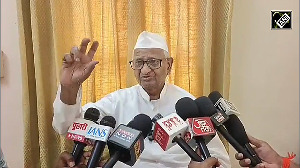The "penetrators," which would collect lunar data, will yield new information about the Moon's rocky interior. The venture is being considered by Britain's astronomy funding agency, the Particle Physics and Astronomy Research Council, which has produced outline plans for two solo moon missions.
The concept has been prepared by Surrey Satellite Technology Limited, one of the country's leading space companies. Its founder and chief executive, Professor Sir Martin Sweeting, told BBC on Wednesday that the costs of space exploration have fallen sufficiently for the UK to think about launching such a probe by 2010.
Martin proposed two options for Britain's first foray to the Moon. The first, named Moonlight, would dispatch four suitcase-sized darts to the lunar surface from orbit. The darts would be sent into craters across a wide area.
They would hit the ground at a high velocity and penetrate to a depth of two metres. The darts could carry a small suite of instruments, such as seismometres to listen for "Moonquakes".
Analysing these tremors would give scientists new insight into the make-up of the lunar interior.
A later mission -- named Moonraker -- would land a spacecraft on the lunar surface and search for suitable sites for future manned bases, the BBC reported without clarifying if the second mission would be manned.
"Current small missions to the moon cost around $650 million. With advances in small satellites, we could probably cut the cost by at least a fifth," Martin said.
Professor Alan Smith of University College London's Mullard Space Science Laboratory, which has contributed to the concept study said, "The idea is that by about 2010 we will launch four scientific high-impact probes. "They will land on the moon at about 400 mph.
They will make various scientific measurements sampling various parts of the moon." Smith said the mission would test technology, which could be used to explore Mars.
According to Andrew Coates of the Mullard Space Science Lab, the impactors would represent the first time there had been a detailed study of the Moon's sub-surface.
"There have been 12 astronauts on the Moon and more than 40 unmanned probes and yet we know surprisingly little about our nearest neighbour," he said.
"Previous missions have focussed on the side of the Moon that faces the Earth. Our plan with Moonlight is for the first time to explore the mysterious far side of the Moon as well."






 © 2025
© 2025